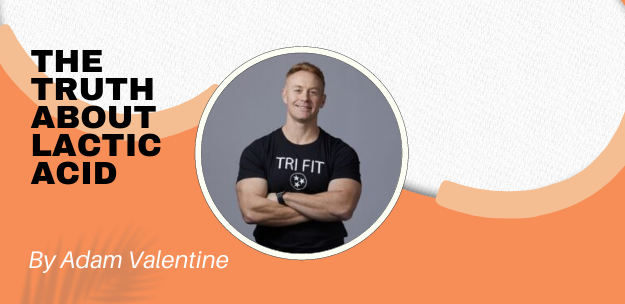
Metabolic Training AKA Cross-fit
Metabolic Training AKA Cross-fit By Adam Valentine “The latest and greatest” The time has come folks, and a new fitness regime has risen. It’s

“The latest and greatest”
The time has come folks, and a new fitness regime has risen. It’s name……Cross-fit. Cross-fit, in case you’ve been under a rock for the past 2 years, has emerged as the fitness industries new leading way to train. It’s not exactly bodybuilding, but a lot of bodybuilder’s are participating. This unique approach to training got its fame following the movie “300”, where actors trained in brutal environments in order to simulate soldiers of the ancient times. Founder Greg Glassmen did not seek cross-fit to be a specialized training method to sculpt and mold certain body parts. Instead, he created a torture chamber that encompassed 11 vital structures to being fit: cardiovascular and respiratory endurance, stamina, strength, flexibility, power, speed, coordination, agility, balance, and accuracy.
The point isn’t to dominate every one of these elements, rather than to be able to possess each trait at a high level of intensity. The premise behind cross-fit training is using all of these domains in a week’s time to become a better athlete.
What is Cross-fit?
Cross-training would be a better term to use here, considering that there is a mix between certain exercises in one single workout. These workouts have names, usually created after a particular cross-fit instructor (ex. Jill). The workouts are performed at high pace and can range from 3-20 minutes in length. Sounds too good to be true huh?
These workouts are very taxing on the body because they allow no rest. That’s right, from the time you start there is no stopping until you finish. Regardless of a strength or power-centered workout, recovery time is not allowed for the purpose of training the body both anaerobically and aerobically at the same time. In other words, you’re performing strength training while doing cardio at the same time. The real kicker in this equation is that you’re racing to beat the clock in almost every workout. For instance, some workouts may call for 3 back squats and a ½ mile sprint for 3 rounds in the fastest time possible. The time is recorded and used as a goal to be next time you perform that workout. Many of the workouts overlap each other so that progression is seen.
The core building phase of this program is centered around free weights. Olympic lifts such as cleans, deadlifts, snatches, and front squats are the primary strength building tools in a typical cross-fit workout. Of course, other types of weights are used in workouts such as kettle bells, dynamax balls, and dumbbells to permit more variety in exercises. In addition, sprints and pull-up bars are a “must-have” for this sport folks, for body weight resistance training is much more taxing and functional for the athletes who participate in it. Here is a taste of what cross-fit has to offer.
Fran (3 rounds: 1st round is 21 reps of both, the 2nd round is 15 reps, and the 3rd is 9 reps)
Kip-ups (pull-up involving a hip thrust)
Thrusters (front squat with overhead press) men=95 lbs, women= 65 lbs
Grace
30 clean-n-jerks (135 lbs) for time
Helen (3 rounds timed)
400 m sprint
21 kettle bell squat swings (55 lbs)
12 kip-ups (chest to bar)
Who’s this for?
Cross-fit can appeal to anyone, which is why it’s becoming so popular. It does, however, require a competitive natured person who is willing to push their body beyond its limits, similar to that of bodybuilding. The real distinction between the two is that cross-fit demands a higher energy output and limited rest time. Majority of the people who participate in cross-fit are former athletes (football, track, and wrestling) who enjoy competition and testing their abilities. In addition, law enforcement and military personnel are the prime candidates for training such as this. Why? Because it isn’t functional to train like a bodybuilder if you’re going to be running and slamming people into the ground. This requires anaerobic capacity, which isn’t exactly favorable to most bodybuilders.
Can bodybuilders train this way and still maintain a large physique?
It takes a lot to make it as a bodybuilder: Genetics, constant eating, supplements, eating, hours in the gym, and did I mention eating? This sport requires attention 365 days a year, yet only attributes to a few extra pounds of muscle. This regimented routine is what makes cross-fit so enticing to the bodybuilding community. Reason being is that it requires little time in the gym, and even aids in the metabolic process (metabolism will speed up). This, however, may affect the body’s ability to utilize glycogen and fat differently. What I mean by this is that depleting glycogen storage in exercises like cross-training may potentially start to alter protein synthesis and amino acid utilization. The only way to use fat as a fuel source is by eliciting a lower heart rate and exercise intensity. Unfortunately, this isn’t the case with cross-fit. Instead, it’s easy to see why the supporters of this sport are very lean or leaner than when they started. Beneficial to the chunky bodybuilder who needs some pep in his/her step, but possibly detrimental to the struggling one’s who can’t put on weight. Cross-fit may aid in strength development, but it definitely won’t add 30 pounds of muscle to your frame. So does this mean that you will shrink if you compete in this for a few months time? Absolutely not, considering your food intake must be adequate to high, and also knowing your genetic predisposition to losing weight faster than others.
The creed of a cross-fit athlete is to posses the 10 traits of performance, not all in perfection, but as a unit of equal status. They enjoy the high pace interval training that elicits lactate buildup and total-body exhaustion. It is without a doubt one of the most demanding sports, yet requires half the time some would prefer to donate to their physique. Call it crazy, but competition is comp

Metabolic Training AKA Cross-fit By Adam Valentine “The latest and greatest” The time has come folks, and a new fitness regime has risen. It’s

Caffeine: Bad or Good? It’s the most legal stimulant that’s easy to buy; Caffeine. We all have tried it and seen its remarkable effects. The

The Truth about Lactic Acid By: Adam Valentine Forums all over the map have evolved over the years. Many “theorists” will attempt at proving why
© 2025. All Rights Reserved
Murfreesboro Digital Marketing & Web Design - Boro Business Lab
